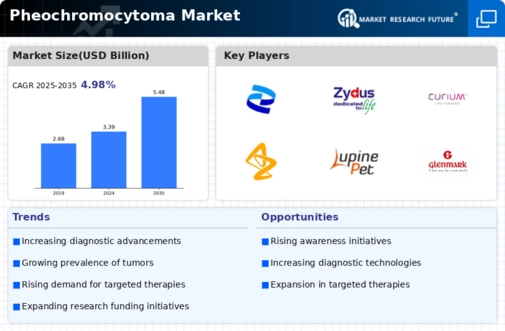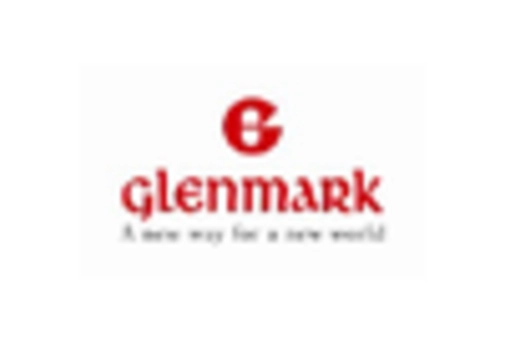-
REPORT PROLOGUE
-
MARKET INTRODUCTION
-
Definition
-
Scope of the Study
- Research Objective
- Assumptions
- Limitations
-
RESEARCH METHODOLOGY
-
Overview
-
Primary Research
-
Secondary Research
-
Market Size Estimation
-
MARKET DYNAMICS
-
Overview
-
Drivers
-
Restraints
-
Opportunities
-
MARKET FACTOR ANALYSIS
-
Porter’s Five Forces Analysis
- Bargaining Power of Suppliers
- Bargaining Power of Buyers
- Threat of New Entrants
- Threat of Substitutes
- Intensity of Rivalry
-
Value Chain Analysis
-
Pipeline Analysis
-
-
GLOBAL PHEOCHROMOCYTOMA MARKET, BY TREATMENT TYPE
-
Overview
-
Alpha-Blockers
-
Market Estimates & Forecast, by Region, 2020-2027
-
Market Estimates & Forecast, by Country, 2020-2027
-
Beta-Blockers
-
Market Estimates & Forecast, by Region, 2020-2027
-
Market Estimates & Forecast, by Country, 2020-2027
-
Surgery
-
Market Estimates & Forecast, by Region, 2020-2027
-
Market Estimates & Forecast, by Country, 2020-2027
-
Radionuclide Treatment
-
Market Estimates & Forecast, by Region, 2020-2027
-
Market Estimates & Forecast, by Country, 2020-2027
-
Others
-
Market Estimates & Forecast, by Region, 2020-2027
-
Market Estimates & Forecast, by Country, 2020-2027
-
GLOBAL PHEOCHROMOCYTOMA MARKET, BY END USER
-
Overview
-
Hospitals and Clinics
-
Market Estimates & Forecast, by Region, 2020-2027
-
Market Estimates & Forecast, by Country, 2020-2027
-
Research and Academic Institutes
-
Market Estimates & Forecast, by Region, 2020-2027
-
Market Estimates & Forecast, by Country, 2020-2027
-
Others
-
Market Estimates & Forecast, by Region, 2020-2027
-
Market Estimates & Forecast, by Country, 2020-2027
-
GLOBAL PHEOCHROMOCYTOMA MARKET, BY REGION
-
Overview
-
Americas
- North America
- Latin America
-
Europe
- Western Europe
- Eastern Europe
-
Asia-Pacific
- Japan
- China
- India
- Australia
- South Korea
- Rest of Asia-Pacific
-
Middle East & Africa
- Middle East
- Africa
-
COMPANY LANDSCAPE
-
Overview
-
Competitive Analysis
-
Market Share Analysis
-
Major Growth Strategy in the Global Pheochromocytoma Market
-
Competitive Benchmarking
-
Leading Players in terms of Number of Developments in the Global Pheochromocytoma Market
-
Key developments and Growth Strategies
- New Product Launch/Service Deployment
- Merger & acquisitions
- Joint Ventures
-
Major Players Financial Matrix & Market Ratio
- Sales & Operating Income 2020
- Major Players R&D Expenditure 2020
-
Major Players Capital Market Ratio
-
COMPANY PROFILES
-
Pfizer, Inc.
- Company Overview
- Product Overview
- Financial Overview
- Key Developments
- SWOT Analysis
- Key Strategies
-
Teva Pharmaceuticals Company Limited
- Company Overview
- Product Overview
- Financial Overview
- Key Developments
- SWOT Analysis
- Key Strategies
-
Zydus Cadila
- Company Overview
- Product Overview
- Financial Overview
- Key Developments
- SWOT Analysis
- Key Strategies
-
Novartis AG
- Company Overview
- Product Overview
- Financial Overview
- Key Developments
- SWOT Analysis
- Key Strategies
-
Curium Pharma
- Company Overview
- Product Overview
- Financial Overview
- Key Developments
- SWOT Analysis
- Key Strategies
-
Jubilant Cadista
- Company Overview
- Product Overview
- Financial Overview
- Key Developments
- SWOT Analysis
- Key Strategies
-
AstraZeneca
- Company Overview
- Product Overview
- Financial Overview
- Key Developments
- SWOT Analysis
- Key Strategies
-
Mylan N.V.
- Company Overview
- Product Overview
- Financial Overview
- Key Developments
- SWOT Analysis
- Key Strategies
-
Apotex Inc.
- Company Overview
- Product Overview
- Financial Overview
- Key Developments
- SWOT Analysis
- Key Strategies
-
Dr. Reddy’s Laboratories Ltd
- Company Overview
- Product Overview
- Financial Overview
- Key Developments
- SWOT Analysis
- Key Strategies
-
Lupin
- Company Overview
- Product Overview
- Financial Overview
- Key Developments
- SWOT Analysis
- Key Strategies
-
Glenmark Pharmaceuticals Limited
- Company Overview
- Product Overview
- Financial Overview
- Key Developments
- SWOT Analysis
- Key Strategies
-
Others
-
APPENDIX
-
References
-
Related Reports
-
-
LIST OF TABLES
-
GLOBAL PHEOCHROMOCYTOMA MARKET SYNOPSIS, 2020-2027
-
GLOBAL PHEOCHROMOCYTOMA MARKET ESTIMATES & FORECAST, 2020-2027(USD MILLION)
-
GLOBAL PHEOCHROMOCYTOMA MARKET, BY TREATMENT TYPE, 2020-2027(USD MILLION)
-
GLOBAL PHEOCHROMOCYTOMA MARKET, BY END USER, 2020-2027(USD MILLION)
-
GLOBAL PHEOCHROMOCYTOMA MARKET, BY REGION, 2020-2027(USD MILLION)
-
NORTH AMERICA: PHEOCHROMOCYTOMA MARKET, BY TREATMENT TYPE, 2020-2027(USD MILLION)
-
NORTH AMERICA: PHEOCHROMOCYTOMA MARKET, BY END USER, 2020-2027(USD MILLION)
-
US: PHEOCHROMOCYTOMA MARKET, BY TREATMENT TYPE, 2020-2027(USD MILLION)
-
US: PHEOCHROMOCYTOMA MARKET, BY END USER, 2020-2027(USD MILLION)
-
CANADA: PHEOCHROMOCYTOMA MARKET, BY TREATMENT TYPE, 2020-2027(USD MILLION)
-
CANADA: PHEOCHROMOCYTOMA MARKET, BY END USER, 2020-2027(USD MILLION)
-
LATIN AMERICA: PHEOCHROMOCYTOMA MARKET, BY TREATMENT TYPE, 2020-2027(USD MILLION)
-
LATIN AMERICA: PHEOCHROMOCYTOMA MARKET, BY END USER, 2020-2027(USD MILLION)
-
EUROPE: PHEOCHROMOCYTOMA MARKET, BY TREATMENT TYPE, 2020-2027(USD MILLION)
-
EUROPE: PHEOCHROMOCYTOMA MARKET, BY END USER, 2020-2027(USD MILLION)
-
WESTERN EUROPE: PHEOCHROMOCYTOMA MARKET, BY TREATMENT TYPE, 2020-2027(USD MILLION)
-
WESTERN EUROPE: PHEOCHROMOCYTOMA MARKET, BY END USER, 2020-2027(USD MILLION)
-
EASTERN EUROPE: PHEOCHROMOCYTOMA MARKET, BY TREATMENT TYPE, 2020-2027(USD MILLION)
-
EASTERN EUROPE: PHEOCHROMOCYTOMA MARKET, BY END USER, 2020-2027(USD MILLION)
-
ASIA-PACIFIC: PHEOCHROMOCYTOMA MARKET, BY TREATMENT TYPE, 2020-2027(USD MILLION)
-
ASIA-PACIFIC: PHEOCHROMOCYTOMA MARKET, BY END USER, 2020-2027(USD MILLION)
-
MIDDLE EAST & AFRICA: PHEOCHROMOCYTOMA MARKET, BY TREATMENT TYPE, 2020-2027(USD MILLION)
-
MIDDLE EAST & AFRICA: PHEOCHROMOCYTOMA MARKET, BY END USER, 2020-2027(USD MILLION)
-
-
LIST OF FIGURES
-
RESEARCH PROCESS
-
MARKET STRUCTURE FOR THE GLOBAL PHEOCHROMOCYTOMA MARKET
-
MARKET DYNAMICS FOR THE GLOBAL PHEOCHROMOCYTOMA MARKET
-
GLOBAL PHEOCHROMOCYTOMA MARKET SHARE, BY TREATMENT TYPE, 2020 (%)
-
GLOBAL PHEOCHROMOCYTOMA MARKET SHARE, BY END USER, 2020 (%)
-
GLOBAL PHEOCHROMOCYTOMA MARKET SHARE, BY REGION, 2020 (%)
-
AMERICAS: PHEOCHROMOCYTOMA MARKET SHARE BY REGION, 2020 (%)
-
NORTH AMERICA: PHEOCHROMOCYTOMA MARKET SHARE, BY COUNTRY, 2020 (%)
-
EUROPE: PHEOCHROMOCYTOMA MARKET SHARE, BY REGION, 2020 (%)
-
WESTERN EUROPE: PHEOCHROMOCYTOMA MARKET SHARE, BY COUNTRY, 2020 (%)
-
ASIA-PACIFIC: PHEOCHROMOCYTOMA MARKET SHARE, BY COUNTRY, 2020 (%)
-
MIDDLE EAST & AFRICA: PHEOCHROMOCYTOMA MARKET SHARE, BY COUNTRY, 2020 (%)
-
GLOBAL PHEOCHROMOCYTOMA MARKET: COMPANY SHARE ANALYSIS, 2020 (%)
-
PFIZER, INC..: KEY FINANCIALS
-
PFIZER, INC.: SEGMENTAL REVENUE
-
PFIZER, INC.: REGIONAL REVENUE
-
TEVA PHARMACEUTICALS COMPANY LIMITED: KEY FINANCIALS
-
TEVA PHARMACEUTICALS COMPANY LIMITED: SEGMENTAL REVENUE
-
TEVA PHARMACEUTICALS COMPANY LIMITED: REGIONAL REVENUE
-
ZYDUS CADILA: KEY FINANCIALS
-
ZYDUS CADILA: SEGMENTAL REVENUE
-
ZYDUS CADILA: REGIONAL REVENUE
-
NOVARTIS AG: KEY FINANCIALS
-
NOVARTIS AG: SEGMENTAL REVENUE
-
NOVARTIS AG: REGIONAL REVENUE
-
CURIUM PHARMA: KEY FINANCIALS
-
CURIUM PHARMA: SEGMENTAL REVENUE
-
CURIUM PHARMA: REGIONAL REVENUE
-
JUBILANT CADISTA: KEY FINANCIALS
-
JUBILANT CADISTA: SEGMENTAL REVENUE
-
JUBILANT CADISTA: REGIONAL REVENUE
-
ASTRAZENECA: KEY FINANCIALS
-
ASTRAZENECA: SEGMENTAL REVENUE
-
ASTRAZENECA: REGIONAL REVENUE
-
MYLAN N.V.: KEY FINANCIALS
-
MYLAN N.V.: SEGMENTAL REVENUE
-
MYLAN N.V.: REGIONAL REVENUE
-
APOTEX INC.: KEY FINANCIALS
-
APOTEX INC.: SEGMENTAL REVENUE
-
APOTEX INC.: REGIONAL REVENUE
-
DR. REDDY’S LABORATORIES LTD: KEY FINANCIALS
-
DR. REDDY’S LABORATORIES LTD: SEGMENTAL REVENUE
-
DR. REDDY’S LABORATORIES LTD: REGIONAL REVENUE
-
LUPIN: KEY FINANCIALS
-
LUPIN: SEGMENTAL REVENUE
-
LUPIN: REGIONAL REVENUE
-
GLENMARK PHARMACEUTICALS LIMITED: KEY FINANCIALS
-
GLENMARK PHARMACEUTICALS LIMITED: SEGMENTAL REVENUE
-
GLENMARK PHARMACEUTICALS LIMITED: REGIONAL REVENUE










Leave a Comment